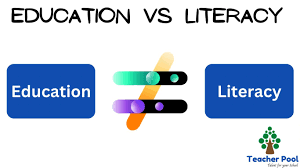In the crowded financial marketplace, with lots of other brands, vying for the attention of your target audience, a strong brand identity is your secret weapon. So, why should they choose your brand? Research from the University of Southern California reveals that companies with consistent branding enjoy up to 23% more revenue growth.
But, what exactly is brand identity? Brand identity is the combination of your purpose, visuals, voice, and values that shape how people perceive you. In finance, where trust and clarity are vital, having a standout brand can make all the difference between being chosen or overlooked.
Branding expert Marty Neumeier once said, “A brand is not what you say it is. It’s what they say it is.” This means your customers ultimately define your brand. The good news? You can guide that perception with the right steps. This article breaks down nine practical ways to create a financial brand identity that grabs attention, builds trust, and grows your business.

—
1. Define Your Brand Purpose, Mission, and Values
Why Start Here?
Before you think about logos or slogans, you need a clear foundation. Your brand purpose, mission, and values are the compass that guides every decision. Without them, your brand risks being inconsistent or confusing.
What Is Brand Purpose?
Your brand purpose is the reason your business exists beyond profit. It answers the question: *Why do we do what we do?* In finance, this might be helping people achieve financial security, making investing accessible, or simplifying money management.
For example, Vanguard’s purpose is to “take a stand for all investors, to treat them fairly, and to give them the best chance for investment success.” This clear purpose helps shape everything they do.
Crafting Your Mission Statement
Your mission explains how you fulfill your purpose. It’s your daily commitment. For example, your mission could be: “To provide transparent, affordable financial advice that empowers clients to make smart decisions.”
A strong mission statement keeps your team aligned and your customers clear on what you offer.
Identifying Core Values
Values are the principles that guide your behavior and culture. In finance, trustworthiness, transparency, customer focus, and innovation are common values.
These values should be visible in your communication and actions. Deloitte’s 2024 Global Marketing Trends report found that brands with strong values outperform competitors by 20% in customer loyalty.
Practical Tips for Defining These Elements
– Gather your leadership team for a workshop.
– Ask: What drives us? What do we stand for? How do we want to be seen?
– Write clear, concise statements.
– Share them internally and externally.
—
2. Understand Your Target Audience Deeply
Why Audience Insight Matters
Your brand identity must resonate with the people you want to serve. If you don’t know them well, your message will miss the mark.
How to Research Your Audience
- Surveys: Ask potential or current customers about their financial goals, challenges, and preferences.
- Interviews: Have in-depth conversations to uncover motivations and pain points.
- Analytics: Use website and social media data to understand behavior.
- Competitor Analysis: See who your competitors target and how.
Segmenting Your Audience
Not all customers are alike. Segment them by:
– Age (e.g., millennials vs. retirees)
– Financial goals (saving for college vs. retirement)
– Income level
– Risk tolerance
This helps you tailor your branding and services.
Tailoring Your Messaging
Once you know your audience, speak their language. For example, younger clients might prefer casual, tech-savvy messaging, while older clients might want a more formal, reassuring tone.
Tools to Help You
– Google Analytics for website visitor data
– SurveyMonkey or Typeform for surveys
– Social media insights on platforms like Facebook and LinkedIn
—
3. Create a Unique Visual Identity
The Power of Visuals
Your visual identity is the first thing people notice. It includes your logo, colors, fonts, and imagery style.
Designing a Logo That Works
– Keep it simple and memorable.
– Avoid complex details that don’t scale well.
– Reflect your brand’s personality: stable, innovative, approachable?
– Consider professional design help or trusted tools like Canva or 99designs.
Choosing the Right Colors
Color psychology matters. In finance:
- Blue: signals trust, stability, and professionalism.
- Green: represents growth, money, and sustainability.
- Gold and silver: suggest premium, luxury services.
- Orange and yellow: can add energy but use sparingly.
Use tools like Adobe Color to build a palette.
Typography Matters
Fonts should be clear and readable. Sans-serif fonts (like Open Sans or Lato) feel modern and clean. Serif fonts (like Georgia or Times New Roman) feel traditional and trustworthy.
Imagery and Graphics
Choose images that reflect your brand’s tone. For finance, professional, clean, and optimistic visuals work best.
Brand Guidelines
Create a document detailing:
– Logo usage rules
– Color codes (HEX, RGB)
– Font styles and sizes
– Image style guidelines
This ensures consistency across all channels.
—
4. Develop a Consistent Brand Voice and Messaging
What Is Brand Voice?
Your brand voice is how your brand “sounds” in all communications. It reflects your personality and values.
Deciding Your Brand Personality
Ask:
– Are you formal or casual?
– Friendly or authoritative?
– Innovative or traditional?
For example, fintech startups often use a friendly, approachable voice. Established banks may use a more formal tone.
Messaging Pillars
Create core messages that communicate what you stand for and the benefits you offer. These pillars guide all content.
Writing Tips for Finance Brands
– Use simple, clear language.
– Avoid jargon unless your audience understands it.
– Be honest and transparent.
– Use active voice and positive language.
Consistency Is Key
Make sure your voice is consistent across:
– Website content
– Social media posts
– Customer emails
– Advertising
—
5. Define Your Unique Value Proposition (UVP)
Why You Need a UVP
Your UVP tells customers why they should choose you. It’s the heart of your marketing.
How to Identify Your UVP
– List your strengths.
– Identify what your competitors don’t offer.
– Focus on benefits, not just features.
– Make it clear and concise.
Examples of Strong UVPs
– “Low-cost investing for everyone.”
– “Personalized financial advice you can trust.”
– “Fast, easy loans with transparent terms.”
Communicating Your UVP
Place your UVP prominently on your website homepage, marketing materials, and sales pitches.
—
6. Build Emotional Connections
Why Emotion Matters in Finance
Money decisions are emotional. People want security, peace of mind, and confidence.
How to Connect Emotionally
– Show empathy: acknowledge fears and challenges.
– Use storytelling (without clichés) to explain your purpose.
– Highlight benefits that improve customers’ lives.
– Use positive, reassuring language.
Research Insight
Harvard Business School found emotionally connected customers are twice as valuable as satisfied ones.
—
7. Design for Flexibility and Growth
Why Flexibility Matters
Your brand should grow with your business. Avoid being too narrow or trendy.
Tips for Flexible Branding
– Use scalable logos that look good in any size.
– Choose timeless colors and fonts.
– Keep messaging broad enough to cover new products.
– Plan for future markets or services.
—
8. Ensure Brand Consistency Across All Channels
The Importance of Consistency
Consistent branding builds trust and recognition.
How to Maintain Consistency
– Use your brand guidelines everywhere.
– Train your team on branding rules.
– Audit your marketing regularly.
– Use templates for social media and emails.
—
9. Monitor, Measure, and Refine Your Brand
Branding Is Ongoing
Your brand should evolve with market trends and customer needs.
How to Monitor Your Brand
– Collect customer feedback.
– Track brand awareness and engagement.
– Measure loyalty and sales impact.
When to Refine
If customers’ needs change or your market shifts, update your brand identity accordingly.
Frequently Asked Questions (FAQs)
Q1. How important is a logo for my financial brand?
A: It’s often the first impression and should be simple, professional, and reflective of your values.
Q2. Can a financial brand be casual or playful?
A: Yes, especially fintech brands targeting younger audiences.
Q3. How often should I update my brand identity?
A Every 2-3 years or when launching new products.
Q4. What colors work best for financial brands?
A: Blue for trust, green for growth, gold for premium services.
Q5. How do I measure brand success?
A: Track recognition, engagement, loyalty, and sales growth.
—
Building a standout brand identity in finance takes time and strategy. It’s about clarity, consistency, and connection. Define your purpose, know your audience, and communicate clearly. Your brand is your promise to customers. What promise will your financial brand make today?
—
Additional Research
– [University of Southern California Study on Brand Consistency](https://www.marshall.usc.edu/news/brand-consistency-drives-revenue-growth)
– [Harvard Business Review on Emotional Branding](https://hbr.org/2015/11/the-new-science-of-customer-emotions)
– [Marty Neumeier’s Guide to Branding](https://www.martyneumeier.com/books/)
– [Deloitte’s 2024 Global Marketing Trends](https://www2.deloitte.com/us/en/insights/topics/marketing-and-sales-operations/global-marketing-trends.html)









zl6g1q
ziixoo
hy53kr
zdghhg
eg7mvs